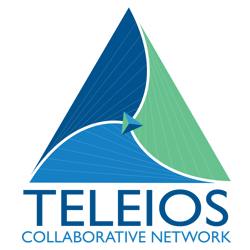7 min read
Preceptorship: An effective model for orientation and onboarding of all new staff.
By: Michelle Webb on 10/3/19 10:40 AM


Preceptorship: An evolving definition
Preceptorships have been widely used in the allied health professions, and a strong evidence-base exists to support their effectiveness in facilitating the transition from classroom and student practice to the workplace for healthcare practitioners. However, little is known and written about the effectiveness of preceptorships in the orientation and onboarding of other professionals.
Preceptorship has been described as “a time-limited, education-focused model for teaching and learning within a clinical environment that uses clinical staff as role models” (Tan et al, 2011). The concept of preceptorship goes back to the 1960s in the United States, where its principle aim was to socialize the novice nursing graduate into a clinical practice area (Dusmohamed & Guscott, 1998). The actual term preceptorship was first used in 1974 to describe how nursing students were being taught (Bilay & Yong, 2004).

Since then, the concept of preceptorship as a model for orientation and onboarding of new organizational members has been applied to various professions. As a result a variety of definitions of preceptorship as well as various terms used synonymously have emerged in the literature. Mentorship is one term that has been used interchangeably with preceptorship although there are distinct differences between the two (a subject for a future blog).
The numerous definitions of preceptorship differ slightly from each other depending on how the specific institution or author is applying the model of preceptorship in practice. Yet, what they all have in common is the establishment of preceptorship as a defined, time-limited (usually short-term) period for the purpose of providing support and guidance that aids in the development of professional competence or proficiency. Competence and proficiency are both professionally and organizationally specific.
Reality shock, stress and anxiety
In my experience, a commonly desired behavior for new organizational members is to “hit the ground running” which can often be a ‘reality shock’ that creates stress and anxiety. Although this behavioral expectation may not be explicitly communicated by the team or leadership, new team members often feel pressure to quickly move from learner to competent and proficient performance despite recognizing that “it is very different here”. This is especially true when the recruitment of the right team member has been prolonged and the team has been performing the work with less than optimal resources for a significant period.

The occurrence of this ‘reality shock’ is well documented in the literature with the transition from education to clinical practice. However, it can also be concluded that the transition by a professional from one organization to another-- even an organization that provides the same or similar service, brings different priorities and pressures and ‘reality shock’ may be experienced even by the experienced professional.
Although widely written about as an experience in the initial transition from education to nursing practice, reality shock is not unique to nursing or the healthcare professions. It has been identified as a major problem faced by new employees when they first start work, during a period known as the “socialization stage” (Schein, 1978).
Reality shock occurs when new employees realize the discrepancy between their expectations and the realities of the new organization and has been cited as a factor in decreased work engagement, decreased organizational commitment and increased intention to leave work.
Reality shock is therefore regarded as a major risk factor to career development and career resilience. While the literature is replete with evidence that the support of a well-structured and well-defined preceptorship can ease ‘reality shock’ for those transitioning from learner to healthcare practitioner, is it logical to deduce that there is value in a preceptorship model that can benefit experienced non-healthcare professionals in their orientation and onboarding to a new organization?

Overall, the purpose of preceptorship is to assist new staff to adapt to their roles, develop the skills needed to successfully perform the role for which they were hired, and thus gain job satisfaction. Another commonly identified goal of preceptorship is to socialize the new or novice staff member to a department or institution where systems, processes and tools are unfamiliar.
Preceptorship also provides an opportunity for lifelong learning and support for continuing professional development, thus possibly contributing to improved recruitment and retention. Career resilience is the long-term goal particularly in the hospice and palliative care specialty where the interpersonal challenges of sustaining the professional caregiver are significant. So, why not use a preceptorship model for providing a quality orientation and onboarding experience for all staff?
To learn more about the Teleios Collaborative Network Preceptor Education Program, please click.

Michelle Webb
CNO / Chief Learning Officer
Teleios Leadership Immersion
Teleios University (TU)
Program Launch: January 20-21, 2020
Discover More

An organizational model that allows not-for-profit hospices (Members) to leverage best practices, achieve economies of scale and collaborate in ways that better prepare each agency to participate in emerging alternative payment models and advance their charitable missions.
Dusmohamed, H., & Guscott, A. (1998). Preceptorship: a model to empower nurses in rural health settings. Journal of Continuing Education in Nursing, 29, 154–160.
Billay, D. B., & Yonge, O. (2004). Contributing to the theory development of preceptorship. Nurse Education Today, 24, 566–574.
Kodama, M. (2017). Functions of career resilience against reality shock, focusing on full-time employees during their first year of work. Japanese Psychological Research, Retrieved from https://doi.org/10.1111/jpr.12161
Lee, T.-Y., Tzeng, W.-C., Lin, C.-H., & Yeh, M.-L. (2009). Effects of a preceptorship programme on turnover rate, cost, quality and professional development. Journal of Clinical Nursing, 18, 1217–1225.
Schein, E. H. (1978). Career dynamics: Matching individual and organizational needs. Reading, MA: Addison‐Wesley
Related Posts
Understanding Credentialing Services
Credentialing is a loaded term.It means different things to different people.If 10 different...
Serious Illness in Rural Communities
Mrs. H. was surprised with her diagnosis of breast cancer that had spread to bone. Her oncologist...
Social Determinants of Health & Serious Illness: Understanding the Connection
Serious illnesses, such as heart disease, stroke, and kidney and lung disease are major public...


